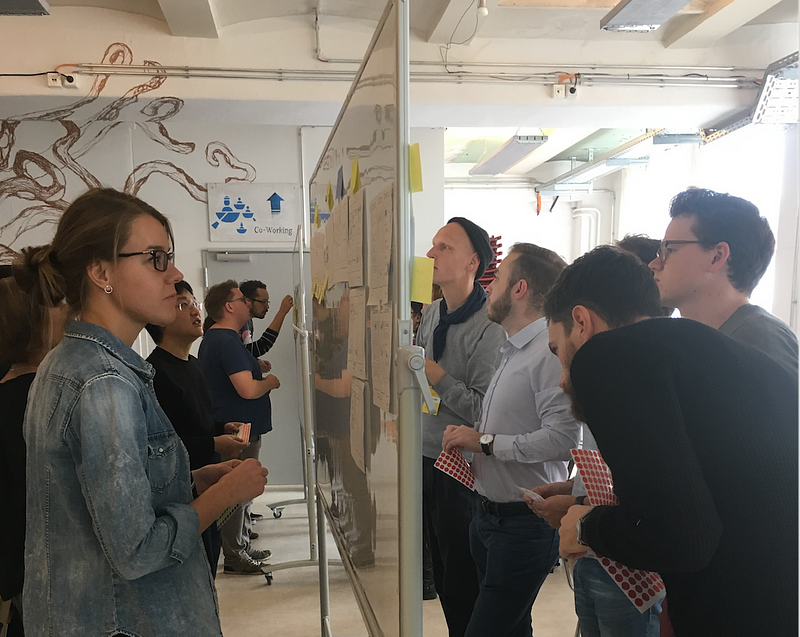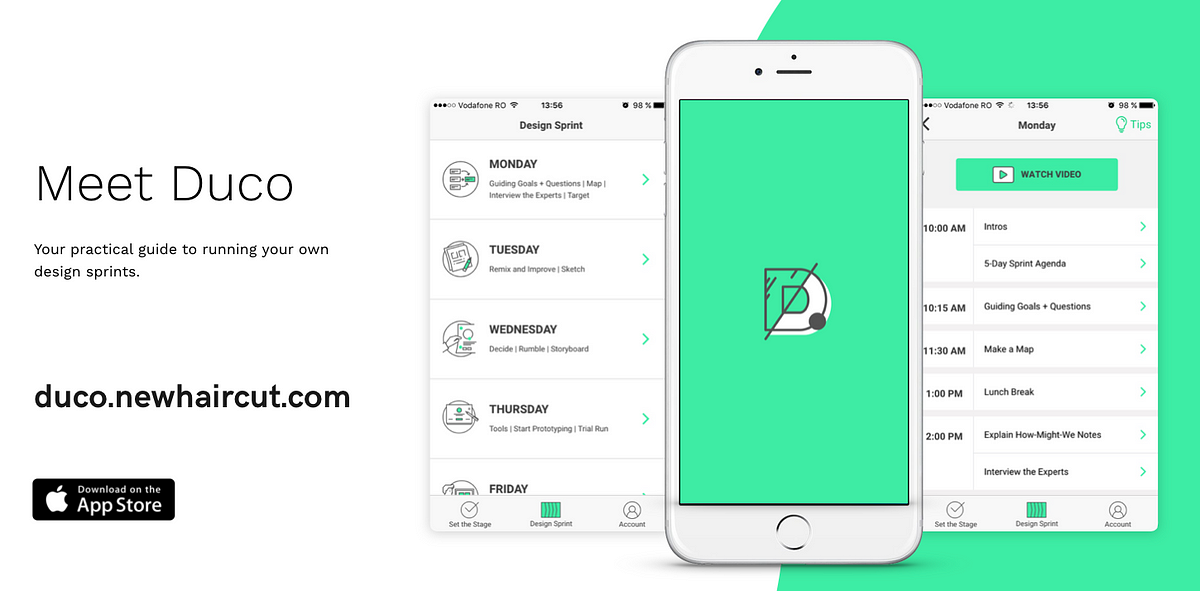Top 7 trending questions about design sprints
After facilitating many design sprints at New Haircut, organizing design thinking workshops and giving talks like this one at InVision, we’ve had the opportunity to talk shop with dozens of sprint practitioners. Today I’m sharing the top 8 follow-up questions we’ve collected. The answers provided are responses from all of the great minds inside New Haircut. The same folks who have been in the trenches, helping our clients manage their sprints and product development.

Pro tip: Keep reading till the end to take advantage of 2 resources that will help ensure your sprints run as smoothly as possible.
Q&A, here goes
Q:“When the team ‘doodles ideas’ in the 4-Step Sketch, how much competitor analysis is covered? What if another product already exists with just the same target?” — Ayesha.
A: Ideally, you’ll perform some competitive analysis prior to the sprint, to confirm your business ideas are solid. If not, this is where Lightning Demos can be helpful — you’ll spend about 1 hour looking at related products (in your industry or otherwise) to get inspiration and consider ways to apply it to your solution and make it better.
Q:“What happens if on Wednesday the decision is reached but the team is unhappy with the available solutions? Do you just trust the process or is it better to pause the sprint?” — Josh
A: This is a great question. Let me give you an example…in a recent sprint we ran, we had strong solutions by Wednesday but none of them answered our sprint questions. So we talked as a group for 30 minutes and found a way to incorporate the best pieces from each solution into 1 that the team felt most confident about.
Q: “Can facilitators take part in other activities such as sketching, deciding or prototyping?” — Mariela
A: Yes. In every sprint we’ve run at New Haircut, the facilitator has always been a part of the sprint process. In fact, everyone in the sprint room should be sure to participate in all of the activities. However, a different team member other than the facilitator should handle the customer interviews.
Q:“What are the Facilitator’s responsibilities exactly? What kind of issues could come up that a Facilitator would address?” — Danielle
A: The facilitator is the person that keeps each person on task (within their role) and the group on time — remember that the timelines are aggressive. They should also have the most sprint experience to help the team from falling into traps like diving too deep too early or “brainstorming.”
Q: “Do you always know if it’s going to be a mobile app or a website, before starting a sprint? Or it’s decided later in some stage of the process?” — Kunal
A: Yes. The sprint is engineered to help you solve specific product or service challenges. Those challenges need to be defined prior to the sprint. Building off of the design sprint framework, we’ve now developed sales sprints to help companies identify the business priorities and specific challenges they’ll subsequently run through a design sprint.
Q: “What is the smallest sprint team size you could potentially have, and is a bigger team always better?” — Shelby
A: This question has come up a lot. The power of the sprint is that you’re using the power of a small team and their varying backgrounds and skill sets to conceive solutions to your challenge. And since a sprint’s timelines are so aggressive, you’ll minimally need 4 people: decider, facilitator, marketer and designer. If you can find 2 or 3 others, they’ll be helpful in providing their specific expertise. However, larger than 7 is not advisable.
Q: “What is the minimum number of testers that you use to validate (or invalidate) a prototype?” — Kristin
A: Well, the ideal number is 5. You won’t have time to interview more than 5 in a single day, and even if you did, the results after 5 people start to blend. But what if you simply can’t locate 5?..well then talk to whomever you can. In the end even talking to 1 qualified customer is better than none…but if you can’t find 5 customers, you may want to reconsider if you’re problem is truly worth solving.
Getting additional design sprint help
Design sprints offer a lot of promise to improve process and introduce design thinking principles, but the journey to mastering them won’t be easy, nor will getting others on your team to commit.
We also launched this design sprint group on LinkedIn where anyone can join, ask questions and get the answers they need to confidently run their sprints.
Finally, at New Haircut, we respect how difficult it can be to master the design sprint process and get the results you’re looking for. So we built Duco to provide our own sprint teams with a resource to keep our sprints on-task and on-target. And now we’ve made Duco available to your team, too!


